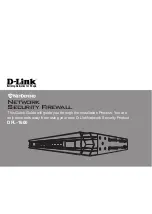
8
Failure Rates in Accordance to IEC 61508
The following table summarizes the failure rates of the modules, which were calculated from Failure Mode
and Diagnostic Effects in accordance to standard IEC 61508. The information can be used in calculating
probability of dangerous failures using Reliability Block Modeling or Markov Modeling. Such modeling
should consider redundant node processors in a 1oo2, 2oo3 or 3oo4 configuration.
Model
3000/06 Atom NP
Safety Integrity Level
2
Safe Failure Fraction:
99.71%
Diagnostic Coverage:
99.48%
Failure Rates In Common Circuitry:
Safe Detected
4.3012E-07
Safe Undetected
4.3447E-09
Dangerous Detected
8.7354E-07
Dangerous Undetected
4.5318E-09
Don't Care
6.6874E-07
Failure Rates In Per Channel Circuitry:
Safe Detected
2.7041E-07
Safe Undetected
2.7314E-09
Dangerous Detected
2.5215E-07
Dangerous Undetected
2.0830E-10
Don't Care
1.3170E-07
Average Frequency of a Dangerous Failure per Hour (1oo1D):
4.7401E-09
Average Frequency of a Dangerous Failure per Hour (1oo2D):
2.8012E-10
Average Frequency of a Dangerous Failure per Hour (2oo3D):
6.5874E-11
Average Frequency of a Dangerous Failure per Hour (3oo4D):
3.5238E-11
Mean Time to Restoration for 1oo2D (SIL-3) configurations:
≤ 9 days
Mean Time to Restoration for all other configurations:
No restriction
In dual redundant configurations, the users must exchange the card within Mean Time to Restore (MTTR ≤
9 days) in order to remain within SIL 3 requirements. Otherwise the card will continue to operate in
degraded SIL 2 mode.









































